#carcharodontosaurids
Text
When I was a kid Tyrannosaurus rex was my all time favorite dinosaur, and is still in my top three
The other two are Carcharodontosaurids. The first is this one.
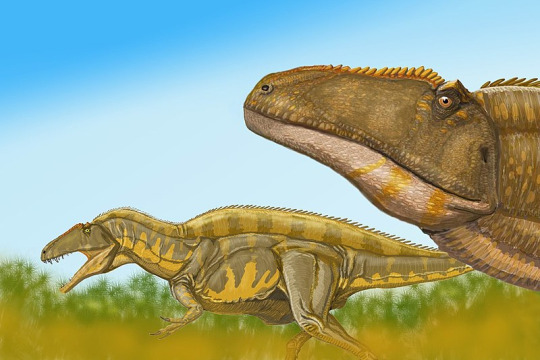
Acrocanthosaurus not only is actually native to North America, but is something of a real life mashup of aspects of all the elements of the 'classic scary giant theropod.' A spine like a Spinosaurid, size to rival Tyrannosaurus, and the basic elements of the super-allosaurid sauropod hunters the Carcharodontosaurids were.
It's become one of my favorite theropods precisely for this reason and makes an ideal creature for a vision of the dinosaur era.
25 notes
·
View notes
Text
Dinofact #107
Considered one of the earliest known abelisaurids, Kryptops is notable for the heavily textured surface of its maxilla, indicating that there was likely a covering, likely of keratin, attached firmly to its face. A cladistic analysis conducted by Paul Serano and Stephen Brusatte found Kryptops to be the most basal Abelisaurid known. A later study, however, by Matthew Carrano and colleagues, found Kryptops palaios to be a chimera, stating that its postcranial remains actually belong to a Carcharodontosaurid, possibly Eocarcharia dinops.
Source: Wikipedia
#dinosaur#dinosaurs#paleontology#kryptops#kryptops palaios#abelisaurid#abelisaurids#abelisauridae#carcharodontosaurid#carcharodontosaurids#carcharodontosauridae#eocarcharia dinops#eocarcharia#paul serano#stephen brusatte#matthew carrano#fun facts#trivia#dinosaur trivia#dinosaur fun facts#20th#december#2022#december 20th#december 2022#december 20th 2022
5 notes
·
View notes
Text
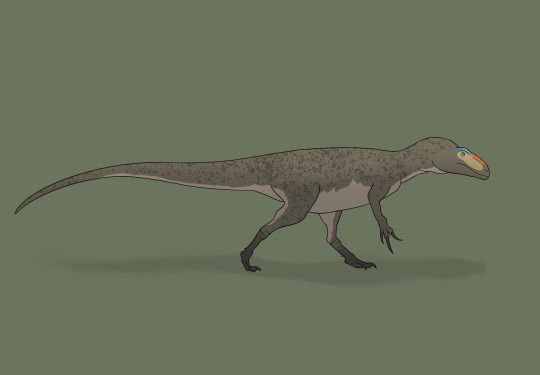
An adult Scipionyx samniticus, the first dinosaur discovered in Italy, interpreted as a Carcharodontosaurid
60 notes
·
View notes
Text

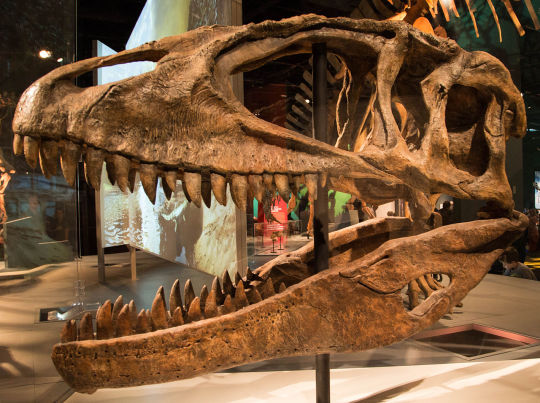
I know that people brought up how Baxcalibur is based on Concavenator, but I feel like it should be worth noting that this is our first Pokemon based on a carcharodontosaurid theropod of any kind.
#to clarify#carcharodontosaurids are the group of theropods that include the likes of acrocanthosaurus and giganotosaurus#concavenator is smaller than its much more massive sauropod-hunting relatives#I get that not everyone is a fan of the baxcalibur lines designs but I like the idea of more pokemon being based on less well-known dinos#imagine if we got a pokemon based on stegorous or deinocheirus#hell maybe we could also see mons based on other lesser-known prehistoric fauna#I'm still waiting for a pokemon based on an azhdarchid pterosaur dammit#ultra ramblings#pokemon#baxcalibur#concavenator#carcharadontosaurus#giganotosaurus#acrocanthosaurus#paleontology
9 notes
·
View notes
Text

Made a full ref for Gavin's redesign
Pinglist: @toygirly
13 notes
·
View notes
Photo
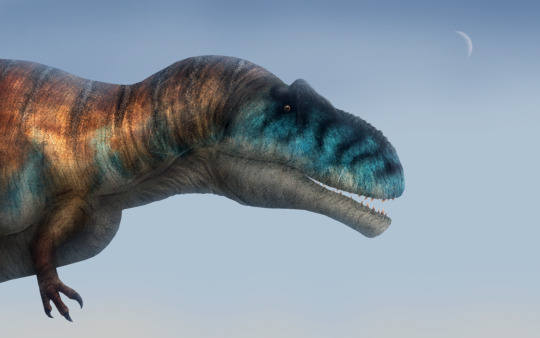
Bit late to the party but here's a quick drawing of the large carcharodontosaurid Meraxes gigas, described this year.
#my art#paleoart#sciart#meraxes#meraxes gigas#dinosaur#theropod#carcharodontosaur#Campanas carcharodontosaurid#Huincul Formation#cretaceous#extinct#animal#nature#digital art#prehistoric#carnivore
30 notes
·
View notes
Text
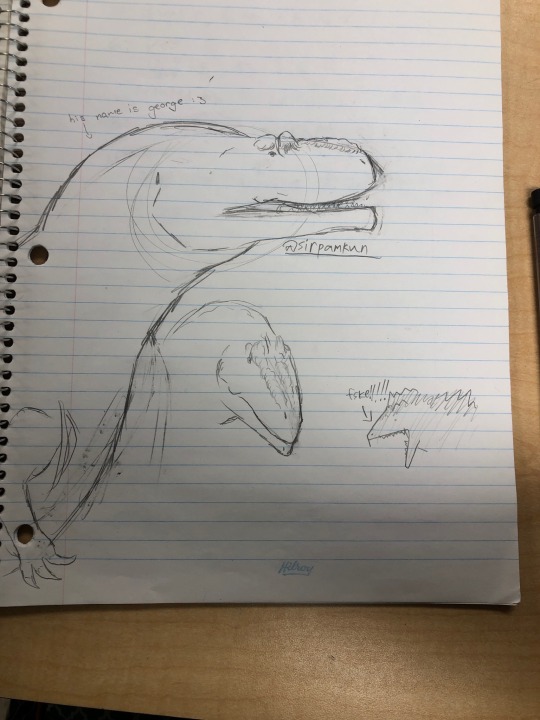
Gave giganotosaurus another shot at last 😁
7 notes
·
View notes
Text
i need christmas to come faster so i can open my calender and get to the mini figure of concavenator
2 notes
·
View notes
Photo

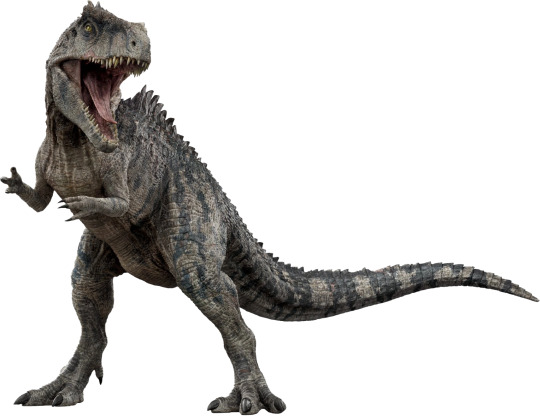
I hate to say this but Dino Crisis has a Better Giganotosaurus Design than Jurassic Park/World because Capcom didn’t at least add too many Spikes on their Back and make them look like Spinosaurus Sailback...
#jurassic park#jurassic world dominion#dominion#dino crisis#jurassic world#dinosaur#dinosaurs#universal#dino crisis 2#capcom#gigantosaurus#carcharodontosaurid#carcharodontosauridae#giganotosaurus#dino#giant southern lizard#video games#universal studios#video game#just saying...
12 notes
·
View notes
Text
Beast of The Apocalypse 06- LUCIFER

A powerful equal to Satanas. Even considered as a "second-in-command" of the beasts. As a walking winter nightmare, those who oppose Lucifer will be frozen and shattered.
#biblically accurate dinosaur#carcharodontosaurid#carcharodontosauridae#dinosaur#demon#beasts of the apocalypse
4 notes
·
View notes
Text
Meraxes

Meraxes is a carcharodontosaurid theropod from the Late Cretaceous of Argentine Patagonia. It is named after a dragon from the Song of Ice and Fire fiction series by George R.R. Martin. Meraxes was a very large theropod, at about 10 m in length, and weighing approximately 4.5 t. Analysis of the holotype specimen suggests it could have been up to 53 years old when it died, having reached skeletal maturity 4 years prior to its death, making it the longest-lived non-avian theropod currently known.
99 notes
·
View notes
Text
The other one is Giganotosaurus carolinii
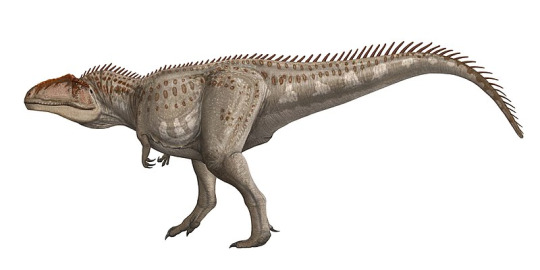
Which is what it is because it's slightly bigger than Tyrannosaurus and was one of those creatures that made a habit of taking down some of the largest marvels ever produced by life on Earth. So seeing this creature on the big screen is one of the main things that makes Jurassic World Dominion an exciting movie for me. Two of my favorite dinosaurs squaring off in this movie's new Kaiju battle fashion.
15 notes
·
View notes
Text
Suskityrannus vs Maip
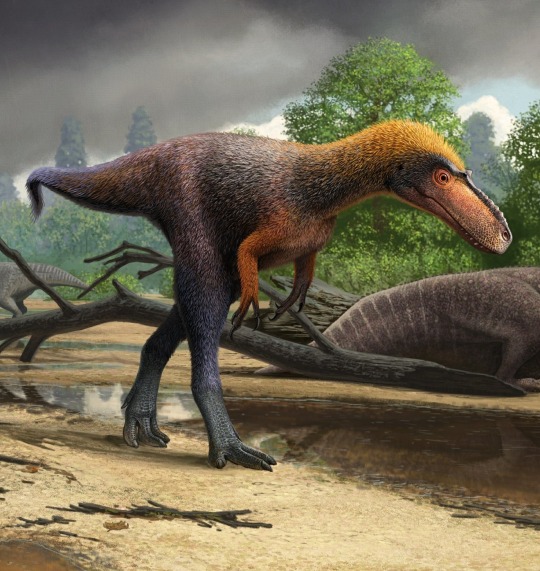

Factfiles:
Suskityrannus hazelae

Artwork by Andrey Atuchin, written by @zygodactylus
Name Meaning: Hazel Wolfe’s Coyote Tyrant
Time: 92 million years ago (Turonian stage of the Late Cretaceous)
Location: Moreno Hill Formation, Zuni Basin, New Mexico
When you follow the progress of paleontology long enough, you start to see things that were previously left undescribed actually get names and the respect they deserve - whether its the “putative screamer” Anachronornis or the “Zuni Coelurosaur” Suskityrannus, you’re sure to get a nice moment and a sense of satisfaction from it. Suskityrannus has been well known for a while due to it being featured in both When Dinosaurs Roamed America as well as Planet Dinosaur. Thought at various times to be a basal Coelurosaur or Tyrannosauroid, its official description placed it somewhat derived within Tyrannosaurs, showcasing the evolution of the Tyrannosaur group as it transitioned from the smaller more speedy forms (like Suskityrannus) to the giant murder birds we know and love later in the Cretaceous. In fact, Suskityrannus lived in an ecosystem that highlighted its changing world, with many early representatives of the later iconic North American Cretaceous ecosystems showing up in early forms in Moreno Hill. Suskityrannus was about one meter tall and three meters long, and already had many adaptations known from later tyrannosaurs. In the forested coastal ecosystem at Moreno Hill, Suskityrannus would have been neighbors with Zuniceratops, Nothronychus, Jeyawati, ankylosaurs, fish, and turtles.
Maip macrothorax

Artwork by @i-draws-dinosaurs, written by @zygodactylus
Name Meaning: Long-chested Shadow of Death
Time: 72 to 66 million years ago (Maastrichtian stage of the Late Cretaceous)
Location: Chorrillo Formation, Patagonia, Argentina
Megaraptors, a group not even really understood a few decades ago, just keep having more and more interesting members added to this group - Maip, a recent addition known from many bones of the trunk and tail, help fill out more of this picture with remains not known from other Megaraptors, and als having the most complete Megaraptor skeleton known. Maip was also interesting in having a very long, thick torso, leading to its specific name. It probably reached 9 to 10 meters in length in life, making it the largest Megaraptor known (literally reaching carcharodontosaurid size), and it may indicate that megaraptors rose to high-level predator status as other top predators went extinct in the region. It had a respiratory system similar to modern birds, with unidirectional air flow, much like other Saurischian dinosaurs. Living in southernmost South America, Maip would have had to deal with a variety of harsh climates, and may have been covered in feathers in order to keep warm. In addition to mosasaurs, snakes, turtles, mammals, fish, and frogs, Maip lived with other dinosaurs such as Nullotitan, Kookne, Yatenavis, and Isasicursor.
DMM Round One Masterpost
#dmm#dinosaur march madness#dmm round one#dmm rising stars#palaeoblr#dinsoaurs#paleontology#bracket#march madness#polls#suskityrannus#maip
265 notes
·
View notes
Text

#Archovember Day 8 - Zhejiangopterus linhaiensis
Azhdarchids are known as the largest flying animals of all time, the last great stand of the pterosaurs before . They contained mighty giants like Quetzalcoatlus and Hatzegopteryx, who ruled the skies of the Late Cretaceous. But not all azhdarchids were flying carnivorous giraffes. Some of them were downright tiny, while others reached a more modest, respectable size. Slightly larger than a female Pteranodon, Zhejiangopterus linhaiensis was one such “moderately large” azhdarchid.
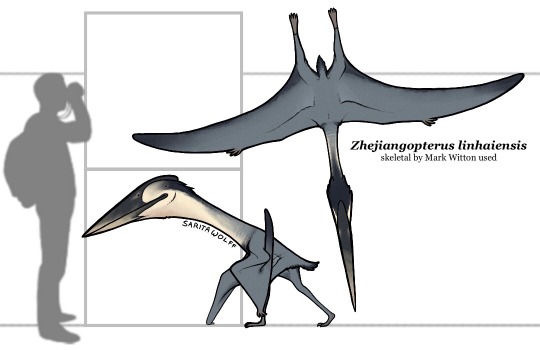
Zhejiangopterus lived in Late Cretaceous China and is so far the most complete azhdarchid known, making it very influential to our understanding of this amazing family of pterosaurs. As several specimens have been uncovered, it was probably fairly common in the Tangshang Formation. It lacked the bony crest seen in many of their relatives, instead opting for a long, straight, graceful profile. Like other azhdarchids, Zhejiangopterus were likely terrestrial stalkers similar to storks and ground hornbills, only using their wings to escape predators or move to new hunting grounds.
Not many other animals have been found in the Tangshang Formation. Alongside Zhejiangopterus, there is only the avialan Yandangornis (whose eggs and chicks and perhaps even adults, if they could catch them, could have been prey for the pterosaur) and an unnamed therizinosauroid. However, living in Late Cretaceous China, it could have also come across the titanosaur Dongyangosaurus further South, and further inland: the ankylosaur Gobisaurus, the pachycephalosaurid Sinocephale, the ornithomimid Sinornithomimus, the carcharodontosaurid Shaochilong, and the mysterious theropod Chilantaisaurus. No doubt there were also plenty of lizards, snakes, mammals, amphibians, and small dinosaurs hiding in the coastal grasses, ready to be nabbed by the dragon of Zhejiang.
#my art#SaritaDrawsPalaeo#Zhejiangopterus#Zhejiangopterus linhaiensis#azhdarchids#pterodactyloids#pterosaurs#archosaurs#archosauromorphs#reptiles#Archovember#Archovember2023
55 notes
·
View notes
Text
It Came From The Wastebasket #07: Carnosaur Carnage
Carnosauria was originally named in the 1920s as a grouping for all of the large-bodied theropod dinosaurs known at the time.
For much of the 20th century it was used as a general wastebasket taxon collecting together all big carnivorous forms – including allosaurids, carcharodontosaurids, megalosaurids, spinosaurids, ceratosaurids, abelisauroids, and tyrannosaurids – and for a while it even included a species that later turned out to be closer related to crocodiles than to dinosaurs.

From left to right: Asfaltovenator vialidadi, Torvosaurus tanneri, Giganotosaurus carolinii, & Baryonyx walkeri
But then cladistic analysis in the 1980s and 1990s revealed that some of these theropods weren't actually closely related at all. Carnosaurs weren't a natural lineage but instead were highly polyphyletic, with the physical similarities between them seeming to be more due to convergent evolution than direct shared ancestry.
Some carnosaurs were split off and reclassified as more "primitive" types of theropod, while the tyrannosaurs were placed much closer to birds with the coelurosaurs. The remaining "carnosaurs" were just the allosaurids, carcharodontosaurs, and their closest relatives, and some paleontologists now prefer to use the name Allosauroidea for this group to distance it from the previous wastebasket mess.
…But Carnosauria might not be done just yet.
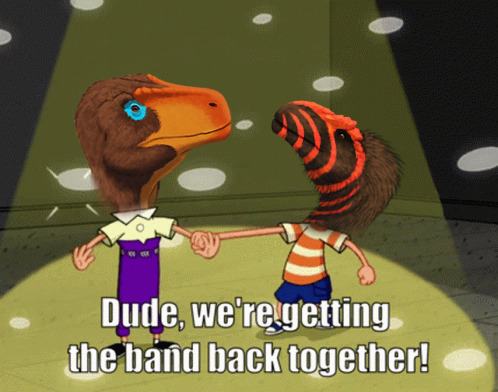
The discovery of Asfaltovenator in 2019 complicated matters once again, with a mixture of anatomical features linking it to both the allosauroids and the megalosauroids (megalosaurids, spinosaurids, and their relatives) – suggesting that these two groups might actually have been closely related to each other in a single lineage after all.
This would potentially return Carnosauria back to something surprisingly close to its original definition, with the various megalosauroids now forming an evolutionary grade leading to the allosauroids.
———
Nix Illustration | Tumblr | Twitter | Patreon
#it came from the wastebasket#wastebasket taxon#taxonomy#carnosaur#asfaltovenator#torvosaurus#giganotosaurus#baryonyx#theropod#dinosaur#paleontology#art#science illustration#paleoart#palaeoblr
338 notes
·
View notes
Text
A Carcharodontosaurid as well as Gen2 Cerato!

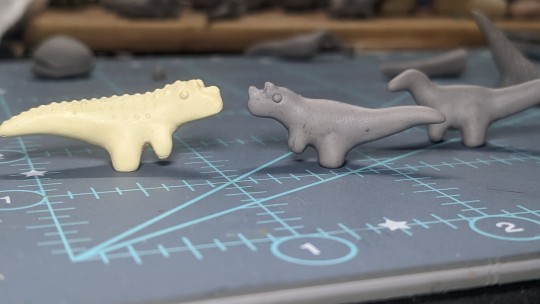
#jurassic park#paleoart#paleoartist#paleontology#tinysaurs#my art#prehistoric#dinosuar#art#Ceratosaurus#carcharodontosaurus#wips
74 notes
·
View notes